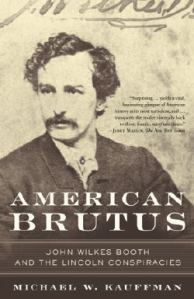Written by John Hiett
The flood of books a couple of years ago commemorating the bicentennial of Abraham Lincoln’s birth got me wondering just how many Lincoln books our library could absorb.
When so many titles get published at once, don’t many get overlooked, or does an event create enough interest that the books find an audience? The same thing is happening now with the sesquicentennial of the Civil War (1861-1865). Lots of books, many of them well reviewed, are being released and will be for the next few years. Where to start? A couple approaches might work.
First, there are some excellent overviews of the entire era. “The Civil War: A Concise History,” by Louis Masur, covers the tensions leading to war, Lincoln’s election, secession, the war itself and reconstruction in a mere 118 pages. In no time at all, you can get back to trying to keep up with James Patterson. Less concise, Steven Woodworth’s “This Great Struggle: America’s Civil War” is more thorough. The Smithsonian Institution is involved with “Civil War: A Visual History,” published by DK, meaning it will contain excellent graphics. Ken Burns (yes, we have his landmark video series) contributes a foreword to “Discovering the Civil War,” a collection of original documents and photographs from the National Archives.
Alternately, one could approach the Civil War chronologically, beginning with David Egerton’s “Year of Meteors: Stephen Douglas, Abraham Lincoln, and the Election That Brought on the Civil War.” From there, try “Dogs of War 1861,”by Emory Thomas, or “1861: the Civil War Awakening,” by Adam Goodheart, or “The Civil War: The First Year Told by Those who Lived It.”
Looking for revisionist history? David Goldfield’s “America Aflame: How the Civil War Created a Nation,” attributes the war to religious fundamentalism and manifest destiny in the North. “God’s Almost Chosen Peoples: A Religious History of the American Civil War,” by George Rable, examines the role of religion on both sides.
One also could approach the war through different lenses. “The Grand Design: Strategy and the U.S. Civil War,” by Donald Stoker, would be for military buffs looking for a macro view. “Lincoln on War”collects the writings of the great man himself, revealing the lengths he was prepared to go to preserve the union.
Finally, John Lockwood asks why the Confederacy didn’t simply invade Washington, D.C., a mostly undefended southern city at the beginning of the war in “The Siege of Washington: The Untold Story of the Twelve Days That Shook the Union.”
If the Civil War is a topic that interests you, there will be plenty to choose from this year. These and other books on the Civil War can be found on the second floor of the Iowa City Public Library.
John Hiett is a senior librarian at the Iowa City Public Library.


